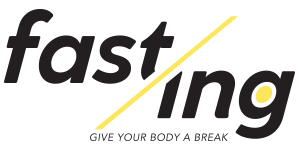How to Choose a Fasting Method

So you’ve decided to try out fasting – that’s great! You’ve probably been hooked by the laundry list of benefits, the scientific evidence, or by one of the thousands of powerful fasting testimonials. (Not to mention that it’s free!)
But there’s one problem…
Out of the dozen-plus options, how do you choose just one fasting method to get started?
It can feel overwhelming to face down all these choices. (Not knowing which one to choose is actually the main reason that people decide not to fast.) But we’ll help you pare down your list and find the fasting method that will help you live your best life, and that suits your health, your goals, and your lifestyle best.
And the really exciting part? You’ll be able to start today!
Before we show you how to choose a fasting method, here’s a quick refresher of the fasting options available for you:
Intermittent Fasting
- 16/8 – fasting 16 hours consecutively, and eating all your food in an 8-hour window. (Eating from 10:00 am to 6:00 pm, for example, then fasting from 6:00 pm to 10:00 am the next day.)
- 12/12 – fasting 12 hours consecutively, and a 12-hour eating window. (8:00 am to 8:00 pm is a typical schedule.)
- 5:2 – the 5:2 fasting method includes two non-consecutive fasting days each week, and limiting your eating to 500 calories for the fasting days. i.e: fasting Monday and Friday, then eating in a 12-hour window on non-fasting days.
- 24-hour fasts – consuming nothing but water or zero-calorie beverages for 24 hours. i.e: 5:00pm Day 1 to 5:00pm Day 2.
- 20/4 – fasting for 20 hours consecutively, eating all your food in a 4-hour window. This usually means one big meal per day or one small meal followed shortly by a larger meal.
- OMAD (one meal a day) or Warrior Diet – eating only one meal per day (usually dinner). Low-calorie snacks are often allowed in the morning and afternoon.
- Alternate-day fasting – fasting on Day 1, eating normally and within a 12-hour window on Day 2. Alternate-day fasts allow up to 500 calories on fasting days.
- 36-hour fasts – this fast happens over one day and two nights. It’s started after dinner on day one, continues through all of day two, and ends when you eat breakfast on day three.
- time restricted eating – fasting for a period of 12-16 hours per day (five days per week), eating most of the food early in the day, and never at night.
- ketogenic fasting – combining a ketogenic diet and intermittent fasts for maximum fat-burning. (Usually allows a high-fat blended coffee or tea in the morning to extend the fasting window.)
Prolonged Fasts
Prolonged fasts start with a minimum of 48 hours of fasting time and generally fall within a 2-5 day range. Other common prolonged fasts include
- weeklong fasts
- 10-day fasts
- two-week fasts
- Daniel fasts
- and the Fasting Mimicking Diet (FMD), which allows 500-600 calories each day for five days
Now that we’ve got most of the fasting methods covered, it’s time for us to narrow them down so you know exactly which one is the best choice for you!
Fasting methods based on your experience
Before choosing any fasting method based on your health, goals and lifestyle, it’s important to know that first-time or new fasters should always prefer shorter fasts.
Performing longer fasts (24+ hrs) might seem the most beneficial, but they could cause more stress than your body is prepared for. Doing such a fast without enough experience can lead to such intense side effects – like crazy headaches and fatigue – that you never want to fast again! And nobody wants that.
Experts say that fasting is like weightlifting. You have to build up your ‘fasting muscle’ with shorter fasts before you can safely do longer ones.
Once you’ve gained a few weeks experience with progressively longer intermittent fasts, such as 12 hours of daily fasting for Week 1, 14 hours for Week 2, and 16 hours for Week 3, you can safely complete fasts of 24 hours and longer
Fasting methods based on your current health
Many people have health conditions that make fasting for long periods of time unsafe (or flat out miserable). These conditions include the following:
- hypoglycemia
- heart disease
- liver/kidney disease
- hypothyroidism
- Grave’s disease
- electrolyte imbalance
- undernourishment and malnourishment
- being underweight
- and cancer
- 12/12
- 16/8
- ketogenic fasting
- Daniel Fasts
- and Fasting Mimicking Diets (FMD)
The 12/12 and 16/8 will still give you many benefits of fasting, but only if they’re included as a long-term habit. (Think: daily.) Daniel fasts an FMDs are great alternatives for people with health challenges who’d rather do longer, food-based fasts that don’t involve changes to daily eating habits.
Fasting methods based on your goals
Once you’ve identified that you’re healthy enough to pick whatever fasting method you please, it’s time to look at your goals. Do you want to lose weight and get in shape? Get healthier and feel better? Age better? Well, there are fasting methods for each.
Weight Loss
- Prolonged fasts – If you have more than a few pounds to lose and you’d like to lose the weight quickly, prolonged fasts (48 hours +) are the way to go. You can safely lose up to two pounds of fat per day when fasting from all food.
- Alternate-day fasting or 5:2 – these fasts have ample scientific research to back up their effectiveness for weight loss. Even though the results will take a little longer than prolonged fasts, they can be easily maintained because they both allow for some food during fasting days.
- 24-hour fasts – when performed even just once per week, these fasts can lead to substantial weight loss over the long term. This is perfect for the beginning faster who wants to lose weight.
Science shows that fasting is ‘muscle-sparing’, meaning it won’t significantly decrease the size and density of your muscles. So fasting is a great way to lose weight while getting in shape! And if you don’t have all that much weight to lose, or you’d like to maintain the weight you’re at, 16/8 fasts would be a perfect fit.
Get healthier and feel better
- Fasting Mimicking Diet – the FMD has been proven to help reverse diabetes and metabolic syndrome, to improve intestinal health, and it’s even used in the treatment of cancer.
- Time-restricted eating (TRE) – TRE improves sleep and it lowers insulin levels. This helps with weight management and inflammation.
- Water-only fasting – fasting for a day or longer with just water enhances autophagy and increases quality of life.
- Intermittent fasting – studies show that reducing calories by just 25% daily improves mood and reducesdepressive symptoms. While the goal of IF isn’t to decrease calorie consumption, it often happens as a side effect.
Age Better
- 16/8 fasts – eating within a 6-hour window daily has been studied to enhance longevity. To tap into the anti-aging benefits, you’d want to do 16/8 fasts.
- FMD – the Fasting Mimicking Diet is proven to reduce markers of aging, including IGF-1 levels and insulin levels.
- OMAD – studies have shown that increasing the amount of fasting per day enhances lifespan in mice. Eating one meal a day maximizes your time spent in autophagy, which helps to renew cells and promote longevity.
Fasting methods based on your lifestyle
If you’re fairly healthy, you don’t have much weight to lose, but you still want to pursue fasting for general health, then it’s wise to base your fasting method on your lifestyle – or at least to consider it with along with your other goals.
Are you the kind of person who likes to get everything done at once and not worry about the daily grind?
Prolonged fasts are definitely up your alley, then – and that includes the FMD if you don’t like the idea of a total fast or aren’t yet prepared for it. These fasts will give you deeper benefits (including more stem cells, more autophagy, and more rejuvenation) than shorter fasts, so you can do them 1-2 times per month or less. No daily habit change required!
Do you love going out frequently with friends?
OMAD, alternate-day fasting, and 5:2 are for you. These fasts give you 3-7 days a week where you can eat as much as you want, share a bottle of wine, and enjoy a good time in the evening.
Are you more of a breakfast person?
Time-restricted eating might be your fasting method. This style of fasting is based on the principle that your body metabolizes food better in the morning, and so it has you eating the bulk of your food in the a.m.
Are you a super-productive person who wants even more productivity?
Without any eating interruptions or blood sugar swings, fasting each day till the afternoon will help you accomplish more while boosting your focus. Increased productivity and drive are both reported for 16/8 fasts and also OMAD.
Putting it all together
We hope you’ve found the fasting method that will work best for you!
Our recommendation is to identify which area of your life is the most important to you – i.e: health, weight loss/feeling better, or lifestyle – and to choose the fasting method that aligns with your top priority and your fasting experience. Don’t be afraid to start small, because you’re going to experience the benefits of fasting regardless!
The next step is to fully research the fasting method you’ve decided on. Do you know what foods and beverages you can eat or drink, if any? Or how to prepare for and end a fast? Check out our Fasting Methods articles to learn more about your technique.
Finally, make sure to consult your doctor or healthcare practitioner before you try to attempt a new fasting regimen. They will be able to run tests and assess whether you’re healthy enough for longer fasts, and they can also monitor you on longer fasts for added safety.
Fasting changes lives!
Get the latest news, tips, and strategies inspired by the transformational power of fasting – delivered directly to your inbox.




